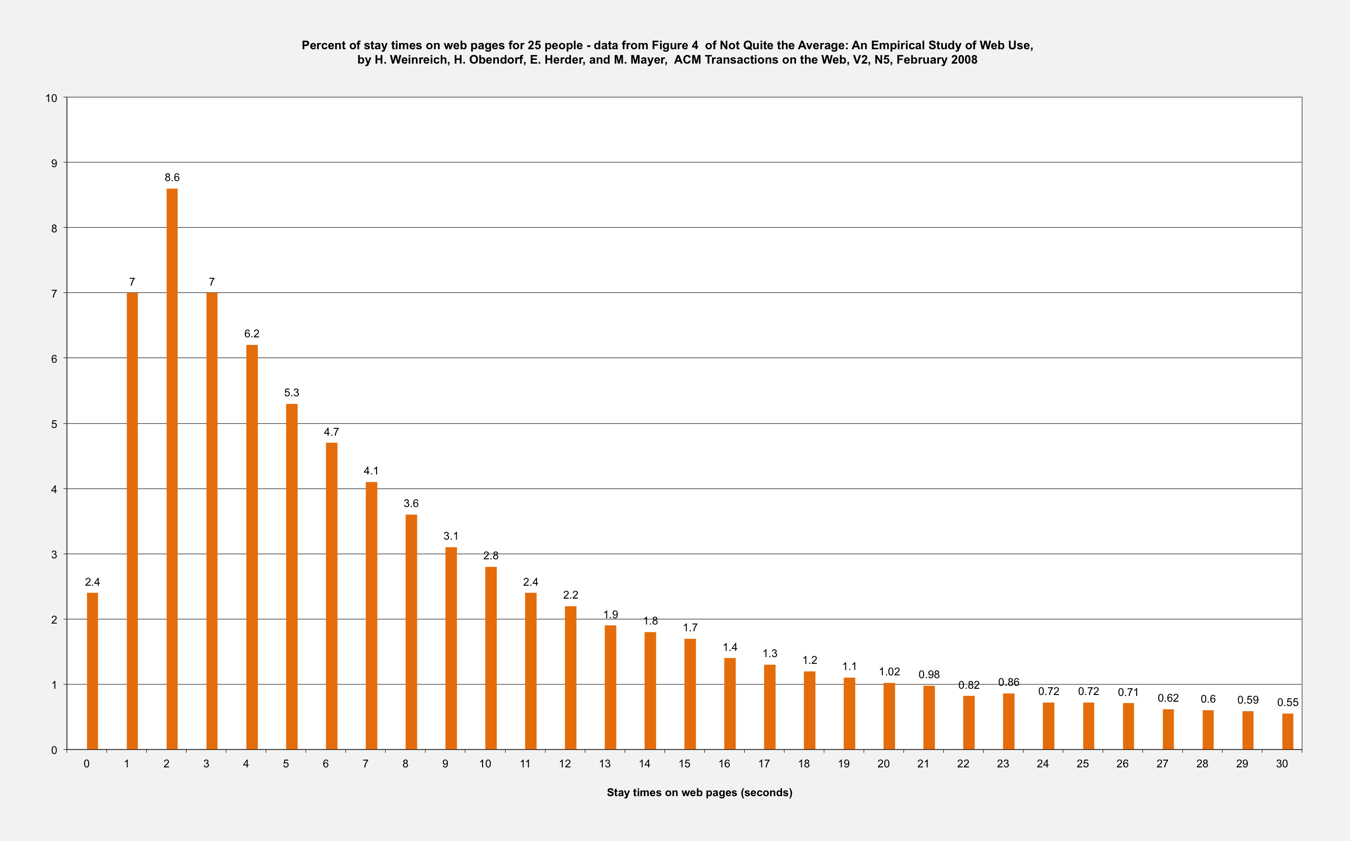“Always remember the importance of the start of your presentation. If you lose your audience within that first 90 seconds, chances are that they will be lost forever.”
On November 10th Dr. Michelle Mazur blogged about Gone in 9 Seconds: Is Your Presentation Losing Your Audience? She claimed instead that:
“You only have 9 seconds to capture your audience’s attention.
Is your jaw on the floor? Are you thinking ‘Michelle’s nuts where is she getting this information?’
In Sally Hogshead’s new book How the World Sees You, I was astounded to learn that you have 9 seconds to fascinate your audience.”
Really? Is this a stunning new insight which came from careful public speaking research on audiences? Well, of course not! Sally started out as an ad copywriter. She dug up and has been peddling that 9 second claim for several years. On page 58 of her 2010 book Fascinate: Your 7 Triggers to Persuasion and Captivation she said:
“According to BBC News, ‘The addictive nature of web browsing can leave you with an attention span of nine seconds - the same as a goldfish.’ “
That BBC News article was titled Turning into digital goldfish and it appeared back on February 22, 2002. Sally just quoted the opening sentence.
How meaningful is an average (median?) of nine seconds spent on a web page? I looked up an often-cited magazine article from February 2008 by H. Weinreich, H. Obendorf, E. Herder and M. Mayer titled Not Quite the Average: An Empirical Study of Web Use that appeared in the ACM Transaction on the Web, Vol. 2, No. 1. They looked at a sample of 25 web users. Figure 4 of that article presents a histogram of the distributions of stay times for all participants at one-second intervals. They had shown results for both first-time visits, and all visits.
The histogram shown above just displays their results for all visits. (Click on it to see a larger, clearer version). They noted:
“....participants stayed only for a short period on most pages. 25% of all documents were displayed for less than 4 seconds, and 52% of all visits were shorter than 10 seconds (median: 9.4s). However, nearly 10% of the page visits were longer than two minutes. Figure 4 shows the distribution of stay times grouped in intervals of one second. The peak value of the average stay times is located between 2 and 3 seconds; these stay times contribute 8.6% of all visits.”
You could describe this “attention span” as including 0.9, 9, and 90 seconds.
How long ago has a nine second attention span been discussed in books? At least 45 years - describing some work done at Northwestern University. But, it hasn’t gotten much traction and mainly has been forgotten. A Handbook for the Advertising Agency Account Executive, published back in 1969 by Addison-Wesley claimed on page 69 that:
“Over the past several years, research has been conducted at the Northwestern School of Speech on the attention span of adults. They found the average attention span of an adult is approximately 9 seconds.
That makes a sudden death situation for the speaker in that he holds his audience for a time period about as long as this sentence.”
Then David A. Peoples 1992 book Presentations Plus: David Peoples’ Proven Techniques summarized it on page 75 as:
“The Northwestern School of Speech reports that the attention span of an audience is approximately nine seconds.”
Lenny Laskowski repeated exactly what Mr. Peoples had said on page 79 of his 2001 book 10 Days to More Confident Public Speaking.
How about 900 seconds (15 minutes)? TED Talks routinely run for 18 minutes, and people don’t seem to lose their attention for less than that interval.


No comments:
Post a Comment